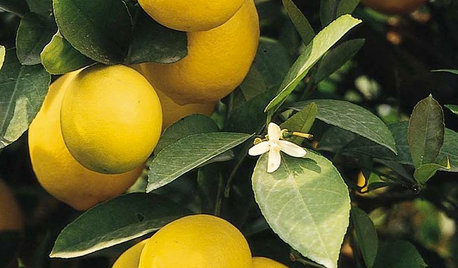peach nitrogen deficiency
westernKY
12 years ago
Related Stories

EDIBLE GARDENSHow to Grow Your Own Peaches and Nectarines
Make gardening a little sweeter with these juicy fruits, which you can eat after plucking or preserve for later
Full Story
GARDENING GUIDESWhat's Wrong With My Plant? Leaves Often Hold the Clues
Learn how to identify common plant ailments by reading their leaves
Full Story
FRUIT TREESHow to Grow Your Own Juicy Plums
Easier than other stone fruits and with a variety of colors to choose from, plums are a versatile garden addition
Full Story
GARDENING GUIDESGarden Myths to Debunk as You Dig This Fall and Rest Over Winter
Termites hate wood mulch, don’t amend soil for trees, avoid gravel in planters — and more nuggets of garden wisdom
Full Story
PETS6 Ways to Help Your Dog and Landscape Play Nicely Together
Keep your prized plantings intact and your dog happy too, with this wisdom from an expert gardener and dog guardian
Full Story
GARDENING GUIDESHow to Keep Your Citrus Trees Well Fed and Healthy
Ripe for some citrus fertilizer know-how? This mini guide will help your lemon, orange and grapefruit trees flourish
Full Story
CALIFORNIA GARDENINGCalifornia Gardener's February Checklist
Celebrate 5 California classics: plants that defy winter with bright flowers, luscious fragrance and, for some, delicious taste
Full Story
FARM YOUR YARDHow to Grow Vegetables in Containers
Get glorious vegetables and fruits on your patio with a pro’s guidance — including his personal recipe for potting mix
Full Story
EARTH DAYGrow a Beautiful Garden With Ecofriendly Greywater
Reducing home water waste means lower bills and a healthier planet. Here's how to set up a greywater home irrigation system that can help
Full Story
GARDENING GUIDES5 Great Grasses for a New Lawn
Learn about maintenance, wear tolerance, ideal climate and more for these top turf choices to pick the right one for you
Full Story






ltilton
blazeaglory
Related Professionals
Derry Landscape Architects & Landscape Designers · Manorville Landscape Architects & Landscape Designers · Roxbury Crossing Landscape Architects & Landscape Designers · Andover Landscape Contractors · Belmont Landscape Contractors · Chattanooga Landscape Contractors · Deer Park Landscape Contractors · Essex Landscape Contractors · Fort Mill Landscape Contractors · Hannibal Landscape Contractors · Nashua Landscape Contractors · Peachtree City Landscape Contractors · Pine Hills Landscape Contractors · Rockwall Landscape Contractors · The Villages Landscape Contractorsblazeaglory
ltilton
econ0003
luis_pr
Scott F Smith
olpea
westernKYOriginal Author
blazeaglory
blazeaglory
westernKYOriginal Author
Scott F Smith
blazeaglory
Scott F Smith
olpea
Michael